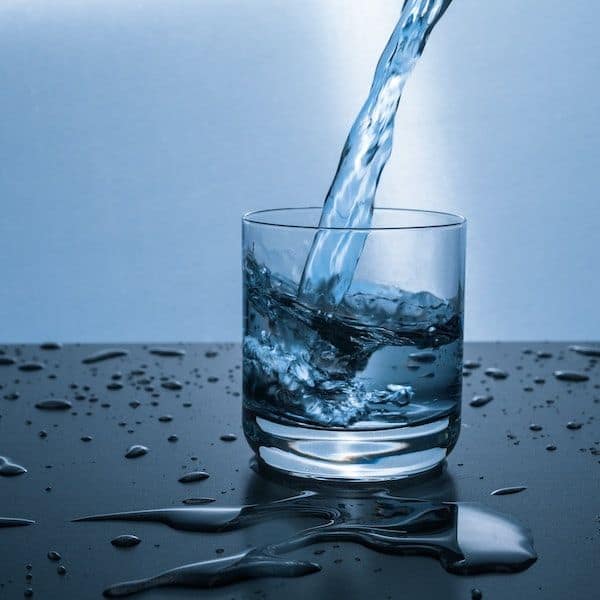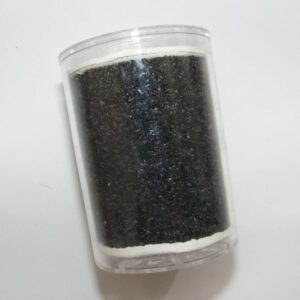Why You Should Make Your Own Whole House Water Filter System?
Investing in a whole house filtration system for your home is one of the smartest moves you can make when it comes to protecting both your and your family’s health. A good quality filter system helps ensure that all the water used from your taps, faucets, and showers is free from impurities and contaminants such as chlorine, pesticides, industrial chemicals, and heavy metals.
Not only that but depending on the type of filter you choose, the whole filtration process can be customized to target specific pollutants. For example, if you live in an area with hard or acidic water that causes plumbing issues or skin irritation problems like dryness or scaliness when showering or bathing, then a water-softening system can be installed to tackle those issues.

However, if environmental pollutants are what concern you most then using granular activated carbon filters can give you peace of mind knowing that harsh contaminants won’t be making it into your home anytime soon.
What’s more is that by investing in a do-it-yourself installation you’ll be cutting out the cost of whole house water filter both professional labor and installation fees charged by pre-fabricated models. Plus you’ll have full control over everything from materials selection to color choice so that it truly reflects your own personal preference – something essential if aesthetics are important to you when it comes to ensuring the best care for your family’s health.
DIY Whole House Water Filter System – A Step-By-Step Guide:
Making the switch to a whole-house water filter system can be a significant investment in both effort and money. However, with the right guide and an eye for detail, you can still take things into your own hands by building your own DIY system. From sourcing the right materials to understanding how to assemble all the pieces, we’ve curated this comprehensive step-by-step guide so that you can put together a quality whole-house water filter system without sacrificing comfort or convenience.
Testing Your House Water
The first step is to determine what type of contaminants are present in your home’s water, as this will help you select the most effective filter. Home water tests can be purchased from hardware stores or online and typically only require a few drops of water for analysis. Once you have the results back, it will tell you what specific pollutants need to be addressed.
Gathering Materials & Tools
The next step is to compile all the materials and tools you’ll need for the job. This includes things like fittings, piping, a filter housing unit, hose clamps, mounting brackets, screws, etc. Make sure to double-check that everything on your list is appropriate for your plumbing system’s size and pressure rating.
- A filter housing unit
- Filter media
- Fittings and piping
- Hose clamps
- Mounting brackets
- Screws Installing the System
Installing the Filter Housing Unit
Now it’s time to put all of your supplies to good use. Start by installing the filter housing unit into a designated area on your main water line, usually near where the pipe enters the building or on an outside wall. Be sure to tighten all the fittings securely for a leak-proof seal.
Inserting Filter Media
Once the housing unit is in place, it’s time to insert the filter media. This can be activated carbon, sediment filters, or other materials best suited for your specific needs. Follow all manufacturer instructions when adding the filter media and check to make sure they’re secured tightly so that they don’t slip out when the water is turned on.
Finalizing Connections
The last step is to make sure all plumbing connections are secure and sealed properly. This includes checking for any leaks around the housing unit, tightening loose hose clamps, and ensuring that all fittings are in place. Once everything looks good, you can turn on the water from the main water supply line and test the system for any leaks or issues.
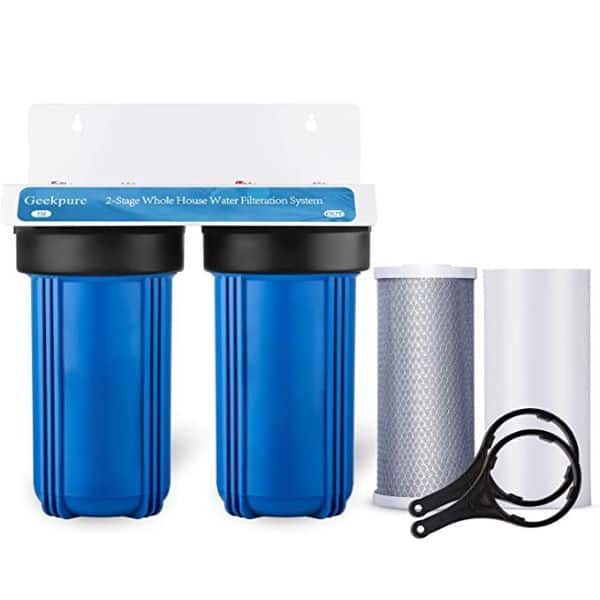
Now that your DIY whole-house water filtration system is installed, it’s time to enjoy clean, safe water on tap! With regular maintenance and professional guidance, if needed, your new setup should be up and running in no time.
No matter your motivation for investing in a whole-house water filter system, you can rest assured that the end result will be worth the effort. A DIY install is not only cost-effective but also allows for full customization and provides peace of mind knowing that harsh contaminants won’t be making it into your home anytime soon.
Pros & Cons of DIY Whole House Water Filter System:
There are many benefits of whole house water filter system. But keep in mind that DIY water filter system has some disadvantages as well.
Pros:
Clean, Healthy Water
One of the primary pros of investing in DIY whole house water filters is that you can enjoy clean, healthy water anywhere in your home. A system like this provides filtration for every shower, faucet, dishwasher, and washing machine, thereby eliminating contaminants and other particulates.
Budget-Friendly & Eco-Friendly
Installing your own water filter system for the whole house is an effective and budget-friendly way to ensure your drinking water is clean and safe. Not only can you save money on expensive store-bought bottled water, but you can also reduce your environmental footprint as well as plastic waste in landfills!
More Control Over The Contaminants
With a DIY filter system, you have more control over the contaminants that are removed from your tap water due to the customizable nature of these systems. Depending on what is available in your area, you could install activated carbon filters which are an economical and effective option when it comes to removing chlorine, pesticides, volatile organic compounds, heavy metals, sediments, taste, and odors.
Higher Level Of Protection Against Bacteria
Unlike filters installed on the main water line only or those that are used on individual taps or appliances, these systems can provide a much higher level of protection against bacteria and viruses.
Less Maintenance Is Required
Additionally, do-it-yourself systems tend to require less maintenance than other types of filters since all that needs to be done is changing out the cartridges once every 6 months or so – no tools needed!
Cleaner Air Quality
Installing a whole house filter system also means that all the water from each shower head and faucet spout will be filtered for cleaner air quality.
Easy To Install
Furthermore, DIY systems are usually inexpensive to purchase and easy to install as most models come with clear instructions for set up and use.
Troubleshooting Support From Manufacturers
In addition, if you ever need help or advice setting up or troubleshooting your filter system, manufacturers usually provide support through phone or email.
Extends The Life Of Appliances
Finally, a DIY whole house filter system not only provides clean drinking water but also helps to extend the life of appliances that rely heavily on H2O such as ice makers and steamers.
A DIY whole house water filtration system could be an ideal investment for those concerned about making a commitment to a cleaner lifestyle both inside and outside their home.
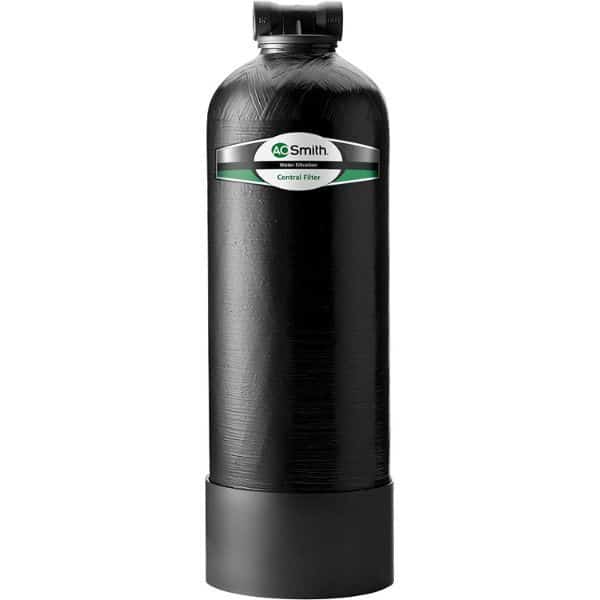
Cons:
While the idea of purchasing a DIY whole house water filter and handling installation on your own may seem quite appealing, it is important to consider potential drawbacks.
Require Additional Parts
One of the greatest issues with DIY filters is the cost; these systems require additional parts over time to keep up with filtering requirements.
These types of systems require additional excavation which can often be difficult and expensive.
Technical Knowledge Is Required
Not only that but installing a DIY filter requires more technical knowledge than many homeowners have, which can lead to installation errors or improper use of the equipment.
Additionally, an inexperienced installer could encounter difficulties with incorrect sizing or configurations which can lead to water pressure problems or even improper filtration.
Do Not Provide The Same Level Of Filtration As Professionally Installed System
Additionally, these filters often don’t offer the same level of filtration as a professionally installed system and may require additional maintenance for optimal performance.
The presence of certain contaminants could also exceed what such a system can handle leading to untested water entering the home.
DIY whole house water filter systems offer some benefits but come with their own list of possible cons as well, which should be evaluated prior to making any purchases.
How to Maintain a DIY Whole House Water Filter System
Once a DIY whole house water filter is installed, it’s important to keep up with regular maintenance in order to keep it running efficiently and ensure the best filtration possible.
- Start by purchasing replacement cartridges of the correct size for your system from a reputable supplier. It is also recommended that you check them every couple of weeks and flush them to remove any debris that has been collected.
- When the time comes to replace your system’s cartridges, be sure to disconnect the filter and turn off the water supply before beginning.
- Once the filter is removed, be sure to inspect it for any signs of damage or wear and tear.
- After cleaning out the housings, replace the filter with a new one.
- Finally, turn on the water supply and make sure your system is running correctly.
By keeping up with regular maintenance on your DIY filter, you can be sure that it will provide clean drinking water for years to come.
Additionally, having an understanding of how the system works and how to maintain it can help to ensure that you are getting the most out of your investment.
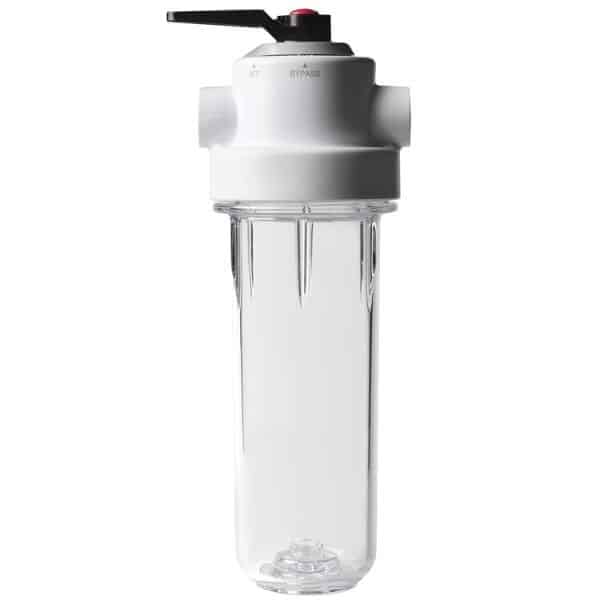
Troubleshooting Tips For DIY Whole House Water Filter Systems:
In the event that your DIY whole house water filter system stops working, there are a few troubleshooting steps to take before calling in a professional.
- First, check the pressure gauge on the unit to ensure that the pressure is within range.
- Low or high pressure can indicate an issue with either the filtration or the pump system. If the pressure is too high, it could indicate blockages in the system.
- If the pressure gauge seems to be working correctly, check that all of your fittings and valves are securely tightened. Loose fittings can lead to leaks and cause damage to your filter system over time.
- Lastly, inspect your filter cartridges for any signs of wear or damage. If you notice any, it is time to replace them.
By following these troubleshooting steps and ensuring that your filters are replaced on a regular basis, you can be sure that your DIY whole house filter system will continue to provide quality results for years to come.
It is also important to contact the manufacturer if you ever need help or advice setting up or troubleshooting the system, as they usually provide technical support for their products.
Types Of Whole House Water Filter Systems:
When it comes to filtration for your entire home’s water supply, there are several types of whole house water filter systems available. From simple cartridge filters that reduce chlorine and sediment particles, to more complex reverse osmosis systems that provide multi-stage filtration and remove a variety of contaminants from your water supply, there is sure to be a system that is perfect for your needs.
It is important to research the different types of systems so you can be sure to choose the one that meets all of your specifications – including budget and space constraints. Selecting the right one means you can rest assured knowing your drinking water is safe and clean while also enjoying better-tasting food or fresher laundry. So don’t put off finding the right whole house water filter system any longer – take the time now to discover which one will provide you with clean, healthy water every day.
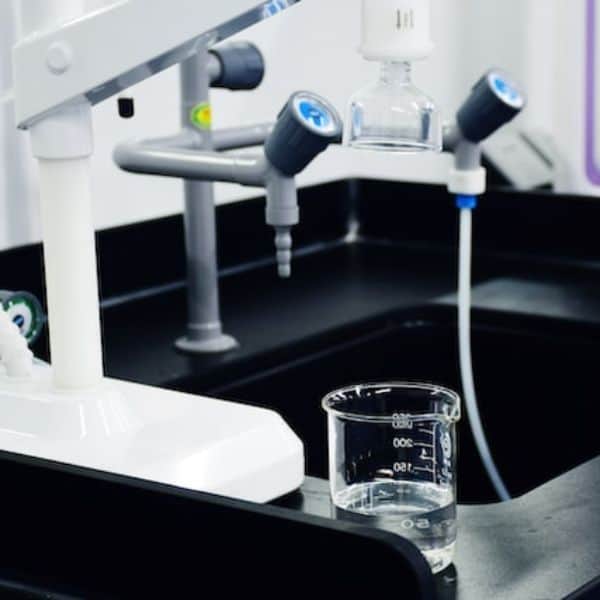
Final Thoughts:
Whole house water filter systems are expensive. However, making your own whole house water filter system is affordable. DIY whole house water filter systems are an economical way to ensure you are getting clean, healthy water for your entire home. They require minimal maintenance and can be installed quickly with the right supplies. By taking the time to install your own whole house water filter system, understanding how they work, maintaining them regularly, and troubleshooting when needed, you can enjoy clean water for years to come.Do-it-yourself whole house water filter systems are an excellent way to ensure the health and safety of your family, as well as provide a great-tasting supply of drinking water. While it can be intimidating initially to set up the system, regular maintenance and troubleshooting will help you keep it running smoothly for years to come.
